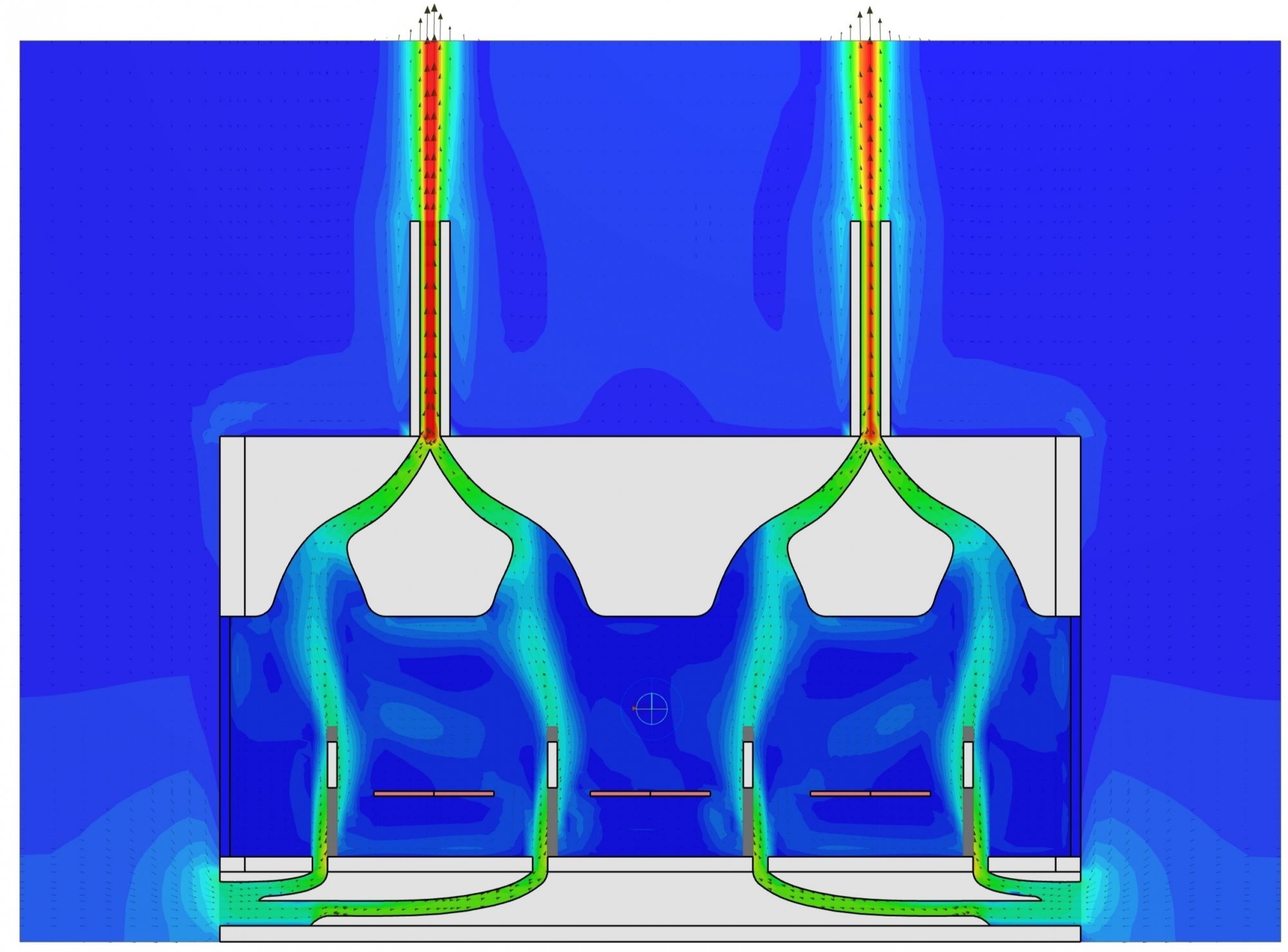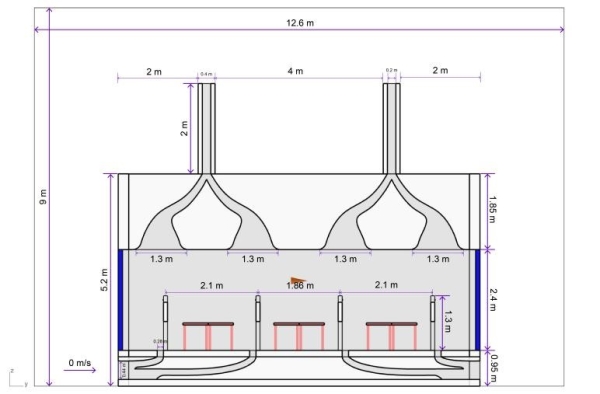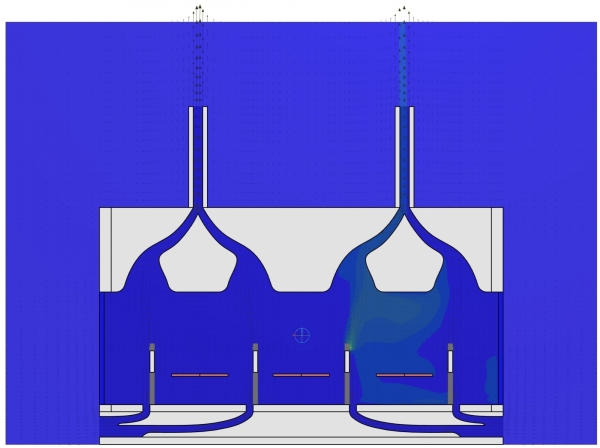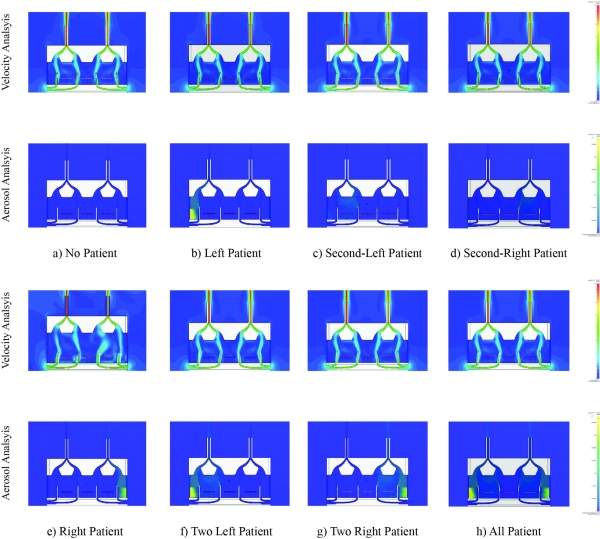Personal Ventilation Using Buoyancy to Reduce SARS-CoV-2 Aerosol Spread in Indoor Space; ARCH 732, 2021
- Allen Suwardi
- Qi Yan
Personal and natural ventilation, SARS-CoV-2, Aerosol, Computational fluid dynamics (CFD), Buoyancy, Stack effect, Solar chimney.
Abstract
The airborne transmission respiratory SARS-CoV-2 virus outbreak has shifted the perspective and habits of people worldwide. Especially in the indoor environment, new focus has been given to the supply of proper ventilation. Ventilation is vital in the mitigation of virus transmission in indoor space. This study investigates the effectiveness of using buoyancy airflow as means to create personal displaced ventilation, avoiding potential cross-infection. A case-study room is modeled and three different design options are investigated with multiple iterations. CFD analysis is conducted using a bottom-in-top-out air circulation with solar chimneys as the main driving force of the buoyancy flow. The human beings modeled in the case-study room are considered the potential source for aerosols. The results demonstrate the capacity of the design strategies to mitigate air mixing and aerosol spread between people in an indoor environment. Incorporating smooth curves allows air to move with less turbulence, funneling air from large to small areas, and lowering the floor to ceiling height have consistently shown effectiveness in reducing the air mixing and the horizontal spread of the aerosols.





